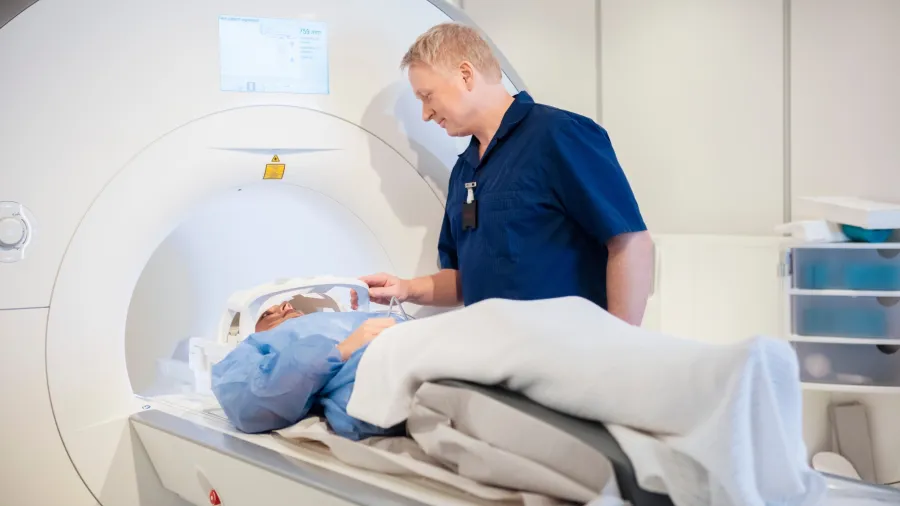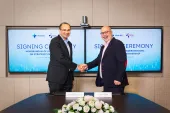
Tech startups mend low-income nations’ healthcare cost pressures
Healthcare providers can use software and smartphones to reduce high costs for diagnosis.
Countries, like Indonesia and the Philippines, are still grappling with a shortage of healthcare staff that leads to underserved patients. Therefore, healthcare firms turn to digitalisation. But forecasts—such as INSEAD’s study predicting a 75% increase in health expenditures across Southeast Asia—challenge lower-income countries’ investment priorities.
Healthcare startups with operations in South Korea, Singapore, and other markets in the Asia Pacific have stepped up to help hospitals and patients save costs through their innovations. They developed applications that can be accessed by patients through their smartphones and partnered with governments or non-profit organisations (NGOs). These healthcare startups showcased their products at the 14th edition of Medical Fair Asia from 31 August to 2 September 2022.
Easy access to diagnoses
AIHealth.SG detects and evaluates one’s risk of non-communicable diseases (NCDs) using AI to assess blood pressure, body mass index, and other data inputs all with just a tap of a smartphone. This allows patients to monitor their vital signs directly.
“Our AI, which is very unique to us, runs on smartphones, and these smartphones are low-resource phones, dating back to 2016 upwards. That means it's accessible by the majority of the population in a lot of these low and middle-income countries,” said Shaun Rossiter, CEO and founder of AIHealth.SG.
Despite being an advanced technology, AIHealth.SG said deploying their software to patients costs nothing with the help of a country’s government.
“If this was funded by a government, in terms of getting it out to the general population, then they simply need to just download the app, or, integrate within the Ministry of Health app that they have, or private hospital group,” Rossiter explained further.
By the year 2030, NCDs will attribute for 74% of all deaths globally with an overwhelming majority unaware of their risk, according to World Health Organization.
Whilst disruption in healthcare is growing, Rossiter said they are facing the usual Human to AI challenges in making sure patients can use and trust AI technology.
“One challenge to adoption by the patients who are afraid that maybe AI could take their identity or do this or do that, when in fact, that's not what it's designed to do. User experience was also a challenge as was using low-resource smartphones in non-connected environments,” said Rossiter.
But after the COVID-19 pandemic, Rossiter said it would be easier to address this hesitation barrier because patients understand that technology will help them understand risks in their health.
AIHealth.SG is a startup based in Singapore that started operations in April 2022 to provide a library of health risk assessment tools using AI technology available to new and existing private and public health, telemedicine, insurance, pharmaceutical, and corporate entities either as software as a service (SaaS) or white label offering.
Reduced MRI scan time
Being inside a Magnetic Resonance Imaging (MRI) is difficult for patients, especially the sick and elderly, for its long scan times, noise, and crucial requirements.
Patients are mandated to stay inside and be as very motionless as possible. Some even suffer from claustrophobia.
MRI software service provider and startup, AIRS Medical’s, Jaeyeon Yoon said his co-founders’ mother was facing the same issue which led them to run their healthcare startup that seeks to minimise scan time.
With AIRS Medical’s deep learning technology called SwiftMR, it reduces by up to 50% the MRI scans that usually take 20 to 90 minutes.
The reason behind longer scan times is to create a high-quality image and if there is a lower scan time, it will compromise the quality. What AIRS Medical’s software does is to improve the low-quality image that was generated from the accelerated scan.
“If the MRI scan time is reduced to half, they can only spend half time inside the MRI scanner, and also their waiting time will be reduced to take an MRI exam,” said Yoon, who is AIRS Medical’s business development head.
Yoon said using SwiftMR will reduce costs as healthcare providers do not need to replace their old scanners.
“Using SwiftMR, this system gives a very similar effect to upgrading their MRI scanner because not only does it reduce the MRI scan time, it also improves the image quality. It is image investment software,” said Yoon.
SwiftMR was already cleared by the Korean and US Food and Drug Administrations. It has been used to scan over 300,000 patients.
AIRS Medical’s solution for hesitancy from healthcare providers is tapping experts and implementing regular tests for its tech.
Yoon explained that regular performance tests are being done by radiologists in Korea and the US. These blind tests include comparing the original longer scan image and the accelerated scan by the SwiftMR.
In their first blind test, more than 90% of the experts said the images by the SwiftMR are equivalent to or even better than the images generated by the longer scans.
“After that, every month we do the regular this blind test with a radiologist to check if the image quality is compromised due to the accelerated scan,” Yoon explained.
The startup was co-founded in South Korea by graduates of Seoul National University in 2018. It taps digital and AI-based diagnostic tests as well as robotics to promote better patient outcomes and improve the clinical experience of healthcare providers.
Fast physiological and psychological analyses
Although not a startup, another AI-powered solutions healthcare app is also being provided by NuraLogix, which offers its patented Transdermal Optical Imaging (TOITM) technology. Nuralogix was founded in Toronto, Canada by Marzio Pozzuoli and Dr. Kang Lee about seven years ago.
Its software uses a “conventional video camera to extract facial blood flow information from the face.” This can be installed on a mobile phone.
“TOI captures blood flow patterns based on a novel method of remote photoplethysmography. Each beat of the heart creates a pressure pulse that travels throughout the arteries of the body,” said Kenneth Cheng, Nuralogix’s Asia Pacific director of sales.
After extracting the facial blood flow data, it will be sent to NuraLogix’s cloud, DeepAffex, which will apply advanced signal processing and Deep Learning AI models to predict physiological and psychological effects.
“Results processed by our DeepAffex engine are then sent back to your device for display and further analysis. A sample of the results DeepAffex provides include heart rate, blood pressure, stress, and more,” said Cheng.
Whilst it is advanced, Cheng said their technology does not seek to replace healthcare providers but merely expand their services.
“It's a Machine learning AI and yes, it's supervised in its training and its performance. Our models are used to screen and build awareness of the risk of health issues, not replace physicians or lab tests. A positive scan or higher risk result means people should visit their provider,” he explained further.
Cheng said their integrated technology in a smart device, which 70% of low-income countries have, will also allow the platform to be reached in marginalised and underserved communities.
“The people in these regions like the rest of the globe have high blood pressure or prediabetes and are unaware of their risk. They would have suffered in silence without even access to the medical tools needed to screen them. Now, they will have access using our technology, exactly as we are doing in South Asia,” said Cheng.
NGOs can also tap such technologies for their public health programs in these low-income regions, Cheng said.
“WHO is currently about to launch a call for technology readiness that will enable low and middle-income regions to support population screening and non-communicable disease self-management. Our system is a wonderful compliment and enabler to this effort,” he added.



















 Advertise
Advertise






